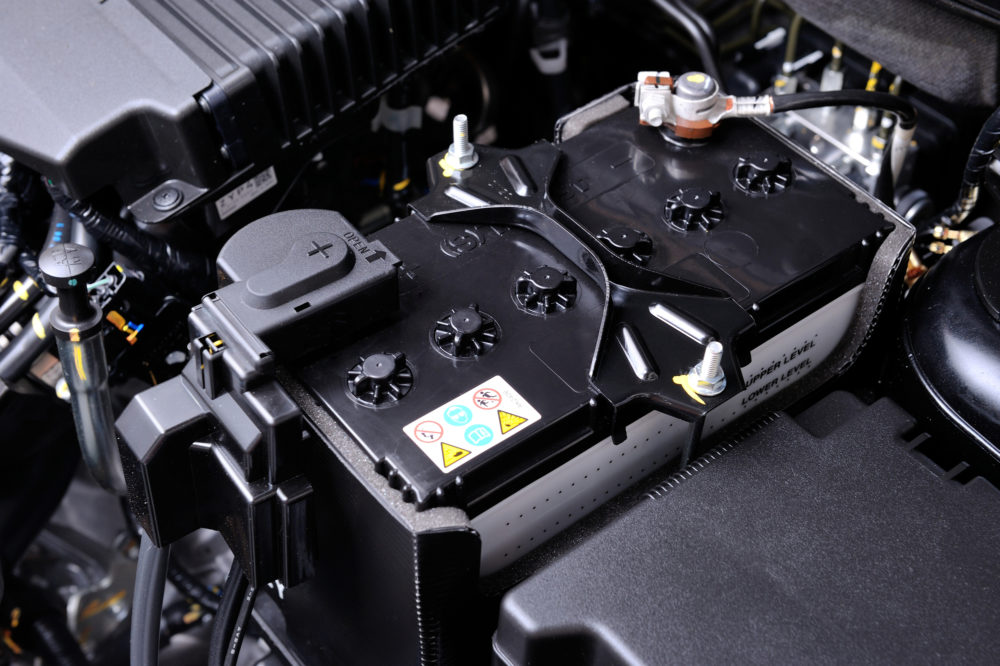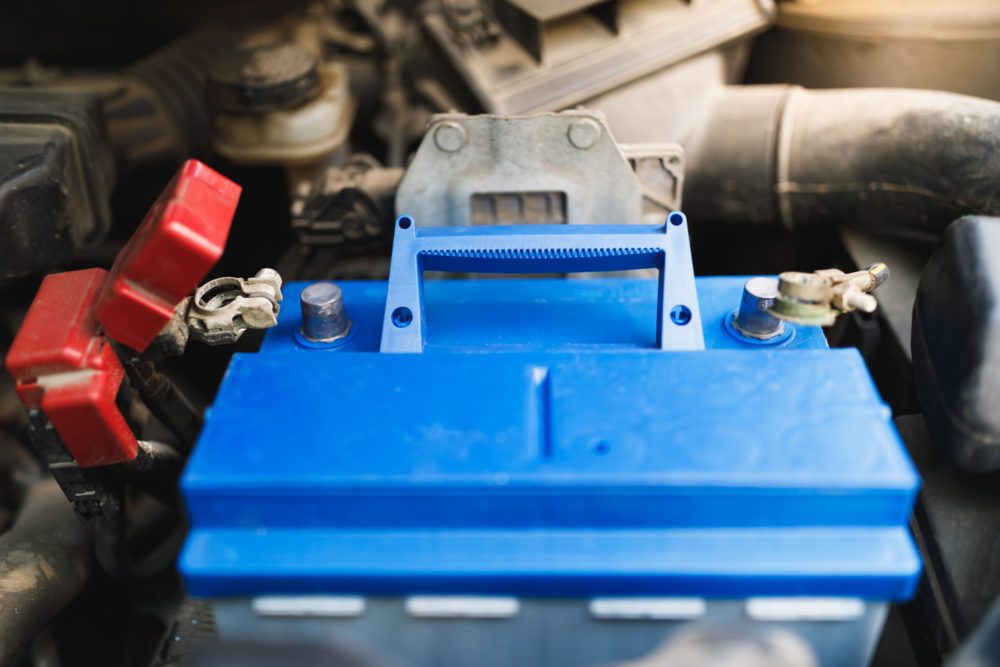When Should You Disconnect Your RV Battery?
You should disconnect your RV battery:
- when you are leaving your RV disconnected for more than a week,
- when you are going to be plugged into shore power for an extended amount of time, and
- during wintertime storage.
Also, turn off the disconnect when you store your RV for an extended period of time to avoid a drain on your battery. Unfortunately, the quick disconnect does not disconnect everything and slowly drains the battery overtime.

Contents
What Does An RV Converter Do?
When you plug your RV into an electrical source, or when you use the onboard generator, the converter’s job is to reduce 120 volts AC down to 12 volt DC to supply power to all of the 12 volt appliances and accessories in the RV. (Source: rvservices.koa.com.)
How Do You Know Your RV Battery Is Charging?
Depending on the battery and the level of charge at the time you connect the battery to charge it, the charge can take anywhere from a few hours to 12 hours on a slow-trickle charge. Some say it takes 10 hours for minimum charge and up to 40 hours for a full charge, but this also depends on the charger you use.
Most RVers plug in the RV or hook up the battery to the charger a day or two before their trip to charge the battery after storage.
RVs use both AC and DC power to power the vehicle and the accessories used for daily living. The 12 Volt DC system runs the electrical components of the engine and battery for your RV. The 120 Volt AC system runs all the typical appliances and power outlets found in a RV.
For the RV to operate on DC or AC power, the RV needs a power system in the form of a battery and hook ups to charge and operate the coach and chassis.
Shore power refers to RV’s being plugged into a main power grid supplied by a campground, a house or business. Shore power usually comes in two ratings, 50 Amp and 30 Amp. Generally, a larger Class A rig will be equipped with a 50 A power plug where smaller Class C’s may have either a 30 A or 50 A power plug. Class B motorhomes usually are equipped with a 30 A power plug.
One must be careful when plugging into shore power at a campsite as the power poll may not have the right amperage. To help prevent this, an adapter to convert 50 Amps to 30 Amps should be purchased.
Most RV’s have one deep cycle battery with larger RVs generally having more than one. House batteries are used to power 12V outlets and appliances such as heat fans, carbon monoxide detectors, refrigerators and some lighting. With the advancements in technology, there are various types of batteries used in modern RVs. They are:
- Lead-Acid (Flooded)
- Gel (Sealed Lead-Acid)
- AGM (Sealed Lead-Acid)
- Lithium Ion
House batteries need regular maintenance to prevent damage from happening to the battery, preventing the battery from holding a charge and sending you on the hunt for a replacement.
One way a battery can become damaged is if the battery maintains too low of a charge. To prevent damage from happening, having a battery monitor can be helpful. The battery monitor allows the user to check the state of charge on a battery and to monitor the drain a load has on the system.
Sometimes it is necessary to convert or invert your power supply. Switching DC to AC power requires having an inverter attached to your energy management system. Inverters are best to have when you are without AC hookups or a generator when dry docking.
Converters are used to turn AC power into DC power. Also known as chargers, a converter is used for powering or charging small devices that are unable to handle the 120 volts of a standard AC outlet.” (Source: intellitec.com)
The chassis batteries are the “heart” of the RV vehicle. While the “chassis” batteries start your RV’s engine, it’s the “house” batteries that power the interior lights, vent fans, water pump and other 12-volt equipment.
Many RVs do charge chassis batteries, but not all. If your rig’s chassis battery (or batteries, in larger motorhomes) aren’t charged by shore power, which is more common in smaller rigs, they’ll only be charged by the alternator when the engine is running.
How Does A Battery Disconnect Switch Work On An RV?
A battery disconnect switch is supposed to disconnect the draw of all the 12V appliances on the battery. However, there is often still a parasitic draw (such as stereos, clocks, carbon monoxide alarms, lights that were left on etc.) that can empty the battery despite the disconnect being disconnected.
In most RVs, the quick disconnect is located in an easy-to-reach area, usually the front storage bay, close to other controls etc.
A battery disconnect switch is a more convenient way to cut off most 12V draws from the RV battery. For example, you don’t have to physically disconnect the battery this way, you simply pull the plug or flip the switch which is the quick disconnect and it interrupts the circuit.
How To Install A Battery Disconnect Switch
Mark Polk shares a great short DIY video on how to install an RV battery disconnect switch, if you do not have one in your RV:
Step 1: When working around lead acid batteries, remove any jewelry and wear protective glasses. Make sure you get the proper disconnect switch for the proper battery load.
Step 2: Disconnect the wires from the battery. Always disconnect the negative cable first.
Step 3: Clean the battery terminals and connectors, and check the water levels (if appropriate)
Step 4: Attach the battery disconnect to the negative terminal and tighten, but don’t overtighten.
Step 5: With the level on the disconnect switch in the open position, reconnect the positive battery cable on the battery. Tighten, but do not overtighten.
Step 6: With the level on the disconnect switch still open, reconnect the negative battery cable to the opposite end of the disconnect switch. Tighten, do not overtighten.
Step 7: Close the disconnect switch lever to check if you have 12V going to the appliances.
When in storage, simply open the disconnect lever to disconnect the battery from the RV. This is an easy project anyone can do in less than 30 minutes.
How To Test Battery Disconnect Switch
Clay L from the irv2.com forum shares this advice: “ My first step would be to put a voltmeter on the two switching terminals and make sure the polarity reverses when the rocker switch is operated on and off – the voltage only appears when the momentary rocker is held in one position or the other.
If that works okay and the voltage on the battery solenoid terminal doesn’t switch to the output solenoid terminal then I would replace the solenoid. Note that shore power needs to be off so the converter voltage doesn’t appear on the output terminal – or you could remove the wire/wires from the output terminal.” (Source: www.irv2.com)

Factors That Affect Your RV Battery Life
Mark Polk from KOA shares several key tips on how to make sure that you extend the the life of your RV battery:
- Deep cycle lead batteries should last for six or more years with proper care and maintenance
- Always keep safety in mind when working around lead acid batteries
- Wear gloves and safety glasses
- Remove all jewelry
- Do not smoke or use open flames
- The leading cause of dead lead acid batteries is extended sulfation which occurs when a battery’s charge drops below 80% or 12.4 volts
- Sulfation can be prevented by recharging in a timely manner
- Never let a 12-volt battery discharge below 12-volts or a 6-volt battery to fall below 6 volts
- A fully charged 12-volt battery is actually 12.73 volts
- A fully charged 6-volt battery is actually 6.37 volts
- When a battery is at 12-volts it is at or below a 40% state of charge
- Use a digital voltmeter to check your level of charge
- Reducing a battery’s depth of discharge will increase overall life
- Parasitic loads – or items that run when the RV is not in use – can cause batteries to discharge
- Hot temperatures and overcharging can also kill batteries so be sure to check water levels frequently
- When adding water, make sure to use mineral-free water – distilled is best
- Batteries should only be watered after charging a battery unless the plates are exposed prior to charging
- The lead and plastics used to produce batteries can be recycled” (Source: koa.com)
Of course, this is especially important for first-time RV owners, as the dealership often does NOT provide this kind of in-depth education on how to properly care and maintain a key RV component, such as the RV battery. The misuse due to lack of knowledge then leads to expensive battery replacement way before it’s time.
Incidentally, the battery quick disconnect can also actually cause harm to the RV battery life overtime, as well as other factors, such as “sulfation, parasitic loads, self-discharging, overcharging, undercharging, and lack of maintenance [that] are the usual suspects of battery death, but they are all relatively easy to prevent with regular attention and smart battery charging.” (Source: lifeonroute.com.)
FAQs
Should you disconnect your RV battery for winter?
The consensus is that you should disconnect your RV battery for winter because otherwise you will damage your battery due to overcharge.
Can a battery disconnect switch go bad?
Yes, the battery disconnect switch can go bad. “On the DC side of things, many of the disconnect switches are actually relays located somewhere else, so there are multiple points of failure. The disconnect switch at the door could work fine, but the relay (under the hood or wherever) might not respond properly.” (Source: https://www.rv.net/forum/index.cfm/fuseaction/thread/tid/25165641.cfm#:~:text=So%20yes%2C%20they%20do%20fail,ever)%20might%20not%20respond%20properly.)
Is it bad to leave your RV plugged in all the time?
“If you leave your RV battery plugged in after it’s fully charged, it can deplete the cells’ electrolyte levels. This can lead to reduced battery life unless you have a newer RV converter with a three or four-stage charging process called a smart charger or if you’ve attached a battery tender.” (Source: www.cruiseamerica.com.)
Are battery disconnect switches safe?
The purpose of battery disconnect switches is to keep RVs safe from damage, so by design, battery disconnect switches are supposed to be safe. Battery disconnect switches are designed to cut-off electrical power, help protect against electrical fires and theft when equipment is not in use. However, some RV owners actually get rid of the battery disconnect switch because it seems to drain the battery regardless.
Do all RVs have a battery disconnect switch?
Most new models have the battery disconnect switch installed, while older models can get those added fairly easily and inexpensively.
Can you overcharge an RV battery?
Overcharging your RV batteries can result in severe water loss, plate corrosion, and eventual failure. Most RVs have a converter with a built-in battery charger. Many RV owners assume that chargers will keep the batteries topped off if you keep the RV plugged in while it’s in storage.
Can you run your RV without a battery?
Generally, yes, you can run the RV without a battery, as the converter should be able to work without a battery while plugged in. However, this is not advisable to do long-term and should be only done in emergencies.




